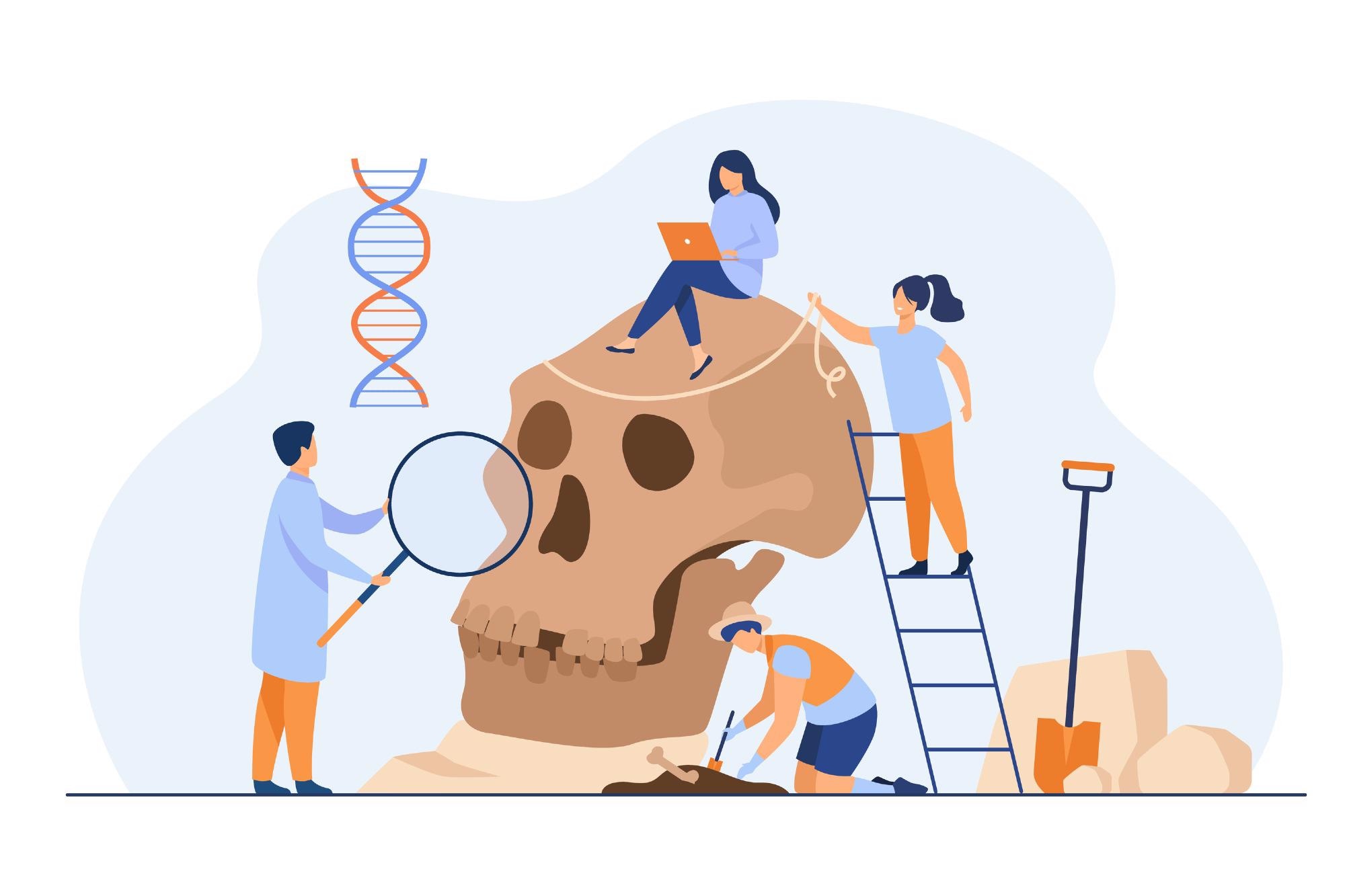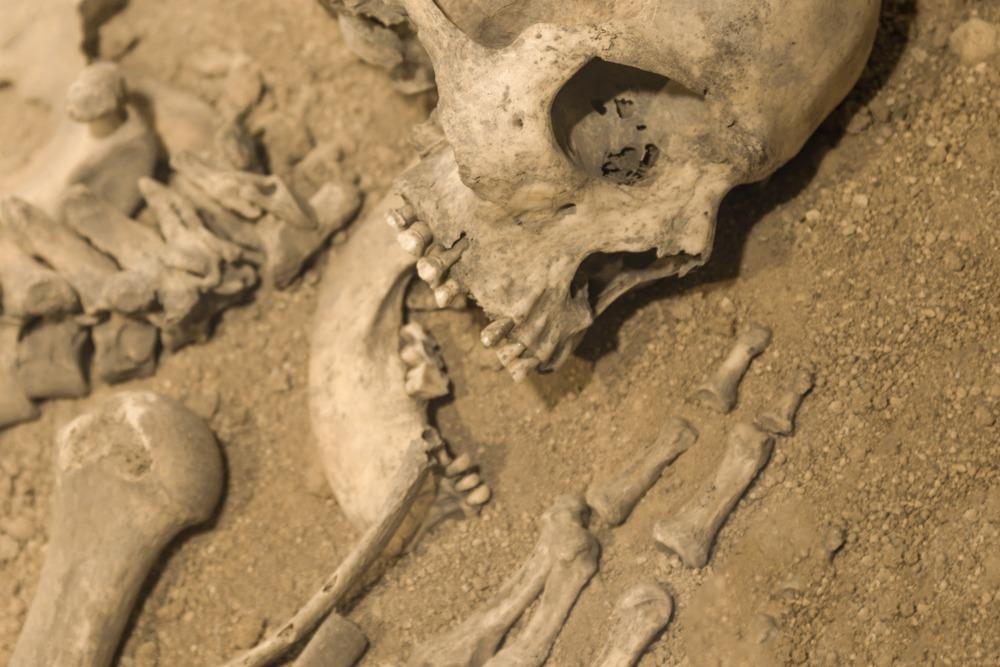Ancient deoxyribonucleic acid (aDNA) is one of the most important biomolecules that can be extracted from skeletal remains that are obtained from archaeological sites. Although aDNA successfully survives in skeletal remains for up to hundreds of thousands of years, some of the challenges that researchers face in analyzing aDNA include fragmentation, low copy number, damage, and contamination of the remains from the modern environment.

Image Credit: SurfsUp/Shutterstock.com
As Next-Generation Sequencing (NGS) technologies have advanced over the past several years, researchers have been able to overcome some of the limitations that were previously associated with aDNA analysis. Several well-established guidelines have been published on the successful recovery of aDNA from skeletal remains that date back as far as 700,000 years ago.
Despite the advantages associated with NGS, the use of these technologies is often limited to only a few laboratories around the world due to the high costs associated with these experiments, as well as the challenges that are associated with handling such large amounts of sequence data.
Proteomic methods for aDNA analysis
To overcome the limitations associated with NGS for aDNA analysis, researchers are looking to better understand ancient biomolecule survival and develop better screening techniques to identify samples that are most likely to contain aDNA.
By focusing on the role of biomolecules, particularly proteins, within ancient bones and teeth, researchers will be able to better understand how organic material is preserved, as well as how it is degraded over time. Several different proteomic analytical methods have been utilized to provide genetic information on archaeological bone and tooth samples.
Sex estimation
When estimating sex, for example, proteomic analysis will often look for sex-specific amelogenin peptides in tooth enamel. These genes are present on both the X- and Y- chromosomes in humans and play an important role in the biosynthesis of tooth enamel.
Typically, nano-liquid chromatography coupled with orbitrap tandem mass spectrometry (nLC-MS/MS) is used to identify amelogenin isoforms AMELX_HUMAN (AMELX) and AMEMLY_HUMAN (AMELY) at MS1 and MS2 levels. Whereas the MS1 level provides information on the precise molecular mass of the intact peptide, MS2 data instead provides a spectrum of fragmented masses that can be used to match the most likely amino acid sequence to mass fragments of the MS1 peptide.
This analysis will subsequently allow for any non-specific amelogenin peptides to be removed from the sample, thereby leaving only those peptides that are attributed to AMELX or AMELY for analysis in a single measure. The sum of multiple different AMLEX and AMELY signal intensities is then acquired, thereby increasing the sensitivity of this approach for sex estimation purposes. In addition to increased sensitivity, this method of proteomic sex estimation can be conducted in samples with low or absent levels of DNA as a result of the increased stability of proteomic signals as compared to degraded DNA.
A recent Nature study utilizing this proteomic approach for sex estimation found that this technique agreed with osteological estimates in 96% of attest samples, while genomic estimates agreed with 84% of the proteomic sex estimates. Taken together, there was a high amount of consistency between all tested methods.
Read Here: Effects of Soil on the Preservation of Bones
Analyzing aDNA in bone samples
Previous proteomic studies on ancient bone were focused on small bone proteins like osteocalcin as a result of its greater survival rate as compared to aDNA. However, further studies utilizing top-down proteomics methods found that fewer archaeological samples contained intact osteocalcin as compared to intact aDNA, thus limiting its utility for analysis.
Comparatively, several bottom-up proteomic techniques have been proven to be more effective at studying proteins like non-collagenous bone proteins (NCPs) in ancient bone samples, even when they are present at low levels. To this end, a 2017 Journal of Proteomics study found that there appears to be a correlation between the number of certain NCPs and whether aDNA is present or absent in a specific sample; however, further work is needed to refine the utility of this approach for predicting a positive aDNA analysis.
As compared to conventional aDNA analytical approaches, these top-down proteomic methods are much more cost-effective without compromising on sensitivity. Furthermore, top-down proteomics methods can also provide information on aDNA survival and offer an alternative approach for screening bone samples that are most likely to contain aDNA to preserve samples from destruction during failed aDNA extractions.

Image Credit: GAS-photo/Shutterstock.com
Future directions
Previous studies indicate that protein and aDNA survival are likely to be independent of one another, and are instead more dependent on the mean annual temperatures from which the samples were recovered. Although proteomic analysis is a useful alternative approach to identifying certain characteristics of bone and tooth samples the relationship between aDNA and protein survival is not well understood.
Several studies have also been used to determine whether the proteomic analysis of ancient samples could be used to predict the presence of aDNA in samples to preserve the costs of failed aDNA analysis. To date, there is not enough information that has confirmed that any specific protein that is always identified in the ancient bone proteome is correlated with successful aDNA analysis. Therefore, further work is needed to identify reliable and consistent protein biomarkers that can be used to estimate the presence of aDNA in a sample.
Sources:
- Wadsworth, C., Procopio, N., Anderung, C., et al. (2017). Comparing ancient DNA survival and proteome content in 69 archaelogical cattle tooth and bone samples from multiple European sites. Journal of Proteomics 158; 1-8. doi:10.1016/j.jprot.2017.01.004.
- Buonasera, T., Eerkens, J., de Flamingh, A., et al. (2020). A comparison of proteomic, genomic, and osteological methods of archaeological sex estimation. Nature Scientific Reports 10. doi:10.1038/s41598-020-68550-w.
- Sawafuji, R., Cappellini, E., Nagaoka, T., et al. (2017). Proteomic profiling of archaeological human bone. The Royal Society of Open Science 4(6). doi:10.1098/rsos.161004.
Further Reading
Last Updated: Apr 20, 2022